Brownstone Institute
We Landed a Major Blow Against the Censorship Leviathan
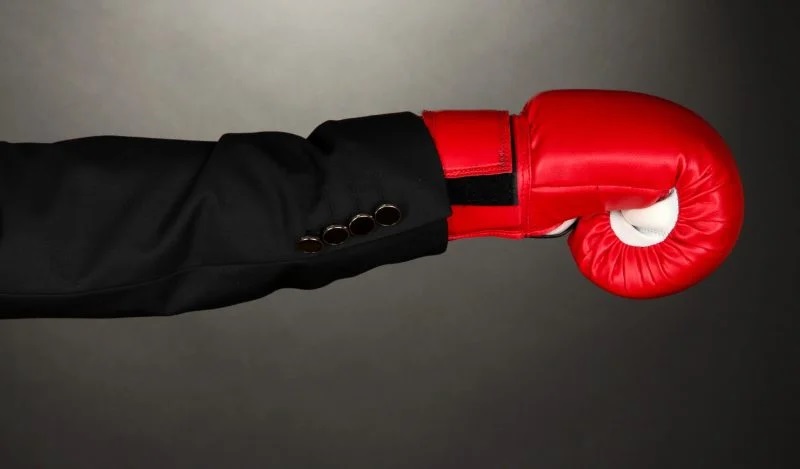
From the Brownstone Institute
BY
Courts rarely release rulings on federal holidays, but no doubt to drive home the point about how important this case is for our constitutionally guaranteed liberties, Judge Terry Doughty released on Independence Day his 155-page ruling on our request for a preliminary injunction against the government’s censorship regime.
The entire document is worth reading for those who want to dig into the details, but in short, he granted nearly all the provisions in our request, placing strict limits around any communication between government officials and social media companies. If such communications continue, they will be subject to subpoena in our case and could implicate the actors in criminal liabilities for violating the injunction.
One naturally wants to believe that an issue one is involved in is of world-historical importance. But as the judge himself wrote in the decision, “If the allegations made by Plaintiffs are true, the present case arguably involves the most massive attack against free speech in United States’ history.” That, my friends, is a strong claim, but as I have previously argued, an entirely accurate one.
As former attorney general of Missouri, now senator Eric Schmitt, told journalist Michael Shellenberger, “It’s shocking. The level of coordination between senior government officials and senior social media executives is astounding. There were direct text messages from the surgeon general of the United States to senior Facebook officials saying, ‘Take this down.’ It’s just un-American.”
According to Shellenberger, Schmitt called on the Department of Homeland Security’s Director of the Cybersecurity and Infrastructure Security Agency (CISA), Jennifer Easterly, to resign. He also believes that the US Congress should mandate transparency by Big Tech companies. “Jennifer Easterly ought to resign,” he said, “no doubt about that. And I think that the people getting swept up in this now, who were engaged in it, they ought to be exposed, and there ought to be consequences.”
Due to time pressure today with media interviews about this news, I will here quote at length Shellenberger’s report from today quoting me — lazy and kind of weird, I know:
Before Judge Doughty issued his ruling, we also spoke to Dr. Aaron Kheriaty, a plaintiff in the case. Kheriaty is the former director of medical ethics at the University of California Irvine but was fired after he challenged the university’s vaccine mandate in court. “You learn who your real friends are when you go through something like that,” he said. “The whole experience was a bit surreal.”
After taking a national stand against vaccine mandates, Kheriaty wrote a book, The New Abnormal: The Rise of the Biomedical Security State. Through his research for the book, the government’s vast censorship operation became clear to him. “Part of what made all the bad policies possible was the strict and rigid control of the flow of information,” Kheriaty said.
The information he and his co-plaintiffs discovered through their lawsuit shocked even them, he told us.
“We didn’t know what we would find when we turned over that rock,” said Kheriaty. “And it turns out that censorship was happening not just at the behest of public health agencies, like the CDC and the NIH, but the intelligence agencies were involved—the Department of Justice, FBI, the State Department, Department of Homeland Security. So the whole military intelligence industrial complex is tangled up in the censorship industrial complex.”
In his recent article in Tablet, Kheriaty called the government’s program the “Censorship Leviathan.” Describing this leviathan as part of a totalitarian system, Kheriaty pointed to the work of German-American political philosopher Eric Voegelin. “[Voegelin] said the common feature of all totalitarian systems… is the prohibition of questions,” Kheriaty explained.
We asked Kheriaty about his reaction to the injunction, which is an important step on the road to the Supreme Court. “I know in my bones we are going to win this one: the evidence in our favor is simply overwhelming,” he told us. “Yesterday’s ruling marks the beginning of the end of the censorship leviathan.”
Said Kheriaty, “The United States Constitution is something of a miracle. But unless we defend it, it’s just a piece of paper.”
I also spoke this morning to journalist Matt Taibbi, and will quote generously from his excellent reporting today on the injunction (Side note: Shellenberger’s and Taibbi’sSubstacks are worth subscribing to if you want additional coverage of the censorship issue—both were among the initial journalists to break the Twitter Files stories and are closely following our case):
With this ruling in the Missouri v. Biden censorship case, Doughty went out of his way on the Fourth of July, to issue a stern rebuke at a conga line of government officials, many of them characters in the Twitter Files. Racket readers will recognize names like Elvis Chan and Laura Dehmlow (of the FBI), Jen Easterly and Brian Scully (of the Department of Homeland Security), Laura Rosenberger (Special Assistant to the President, and one of the creators of Hamilton 68) and Daniel Kimmage (of the Global Engagement Center), who were all just ordered to get the hell off the First Amendment’s lawn. Paraphrasing, Doughty enjoined them from:
meeting with social-media companies for the purpose of pressuring or inducing in any manner the removal or suppression of protected free speech;
- flagging posts on social-media platforms and/or forwarding to social-media companies urging the same;
- collaborating with the Election Integrity Partnership, the Virality Project, the Stanford Internet Observatory, or any “like project” or group for the same purpose;
- threatening or coercing social-media companies to remove protected free speech.
The legacy media, which has been studiously ignoring this case, could not ignore yesterday’s ruling, so there were reports in the New York Times, the Washington Post, the Wall Street Journal, Reuters, and so forth. The Times and the Post disappointingly tried to frame the case as a partisan issue. But of course, it’s not a left/right or liberal/conservative issue at all: it’s a legal/illegal issue. The only question is whether government officials did or did not violate the highest law of the land—namely, the United States Constitution. Yesterday, the court indicated that the answer to this question is likely yes, the government’s actions were probably unconstitutional and the plaintiff’s are likely to succeed on the merits.
The New York Times reporters even wrung their hands worrying that the ruling could “curtail efforts to fight disinformation”—begging the question about who decides what constitutes disinformation. The First Amendment clearly indicates this cannot be the job of the government. More tellingly, the Times and the Post in their framing of the case simply said the quiet part out loud, indicating that these newspapers believe government censorship is good as long as it’s controlling the flow of information in directions that they approve.
Taibbi goes on to comment:
Yesterday’s ruling, which naturally will be dismissed as Republican clickbait, shows at least one federal judge agreed with the argument that a complex system to mass-funnel content recommendations from enforcement agencies and politicians to tech platforms represents what the Attorneys General called a “sprawling federal ‘Censorship Enterprise.’” As one of the plaintiffs, Dr. Aaron Kheriaty wrote, the evidence in the suit revealed a far broader range of topics monitored by government than most people know of even now, from gender ideology to abortion to monetary policy to the war in Ukraine and beyond.
“Take any contentious issue in American public life,” said Kheriaty today, “and it seems like the federal government, once they got this machinery rolling, just thought, ‘Okay, we can combat ‘misinformation’ on all kinds of things.’”
The Missouri v. Biden investigators found the same fact patterns found by Twitter Files reporters like me, Michael Shellenberger, Bari Weiss, Lee Fang, David Zweig, and Paul Thacker, and then later Andrew Lowenthal, Aaron Mate, Sue Schmidt, Matt Orfalea, Tom Wyatt, Matt Farwell, @Techno_Fog, and many others did. They also echoed descriptions by like Jacob Siegel at Tablet, or Robby Soave at Reason, who wrote about similar issues at Facebook.
Those of us who worked on the Twitter Files story initially experienced the same problem investigators and plaintiffs in the Missouri v. Biden case apparently did, being unsure of what to make of the sheer quantity of agencies and companies involved in what looked like organized censorship schemes. I know I wasn’t alone among Twitter Files reporters in being nervous to report that content moderation “requests” were coming from “agencies across the federal government — from the State Department to the Pentagon to the CIA.” It’s what we were seeing, but seemed too nuts to be true. But as time went on, even more topics, government offices, and state-partnered organizations started popping up, leaving little question of what we were looking at.
Eventually, we found the same plot outlined in Missouri v. Biden: pressure from government in the form of threatened regulation, followed by a stream of recommendations about content from multiple agencies (the investigators in this lawsuit even found meddling by the Census Bureau). This was capped by the construction of quasi-private bureaucracies that in some cases appeared to have been conceived as a way for the government to partner on content moderation without being in direct violation of the First Amendment.
Most of us covering the Twitter Files tried to avoid delving into the constitutionality/legality question, but couldn’t help wondering in some cases, for instance with Stanford’s Election Integrity Partnership and Virality Project, which created cross-platform content ticketing systems about the 2020 race and Covid-19. We all thought we were looking at a potentially major problem there, since the principals from places like Stanford weren’t shy about saying they wanted to “fill the gap of the things that the government cannot do themselves” because partners like DHS/CISA lacked “the funding and the legal authorizations” to do the work.
What might happen if judges or juries were presented with that whole picture, including details about the open, ongoing partnerships of these groups with government agencies like CISA and the Surgeon General? We have some idea now.
The dismissal of these complaints as partisan “tinfoil hat” conspiracy by politicians like the ones who interrogated Michael Shellenberger and me in Congress, and by papers like the New York Times and Washington Post, has all along felt like the the same kind of error that led to the mis-call of the 2016 election and the massive loss of audience for traditional media stations in the years that ensued.
These mainstream news observers are trapped in a bubble of their own making and can’t or won’t see that the average American looks at letters from the White House to shut down social media accounts, or piles of “suggestions” on content from the FBI, and feels instinctively that he or she really doesn’t like that, whatever it is. One can hope at least a few censorship advocates will read the ruling and grasp that in a democracy, you can’t have a situation where only half (or less) of the population thinks something as basic as the speech landscape is fairly arranged. That just won’t hold, making rulings like this foreseeable, if not inevitable. No matter what, this can’t be anything but good news for the First Amendment.
“Hopefully,” said Kheriaty, “yesterday was the beginning of the end of the censorship Leviathan.”
I’ll be posting more commentary on the ruling and next steps in the case in the days ahead. Yesterday was the first victory in the long and slow road to the Supreme Court, where observers believe this case will ultimately be decided. For now, I’ll leave you with a few sobering lines from the closing pages of yesterday’s decision (p. 154):
Although this case is still relatively young, and at this stage the Court is only examining it in terms of Plaintiffs’ likelihood of success on the merits, the evidence produced thus far depicts an almost dystopian scenario. During the COVID-19 pandemic, a period perhaps best characterized by widespread doubt and uncertainty, the United States Government seems to have assumed a role similar to an Orwellian “Ministry of Truth.”
The Plaintiffs have presented substantial evidence in support of their claims that they were the victims of a far-reaching and widespread censorship campaign. This court finds that they are likely to succeed on the merits of their First Amendment free speech claim against the Defendants.
I trust that, in the end, we will succeed.
Reposted from the author’s Substack
Brownstone Institute
The Doctor Will Kill You Now

From the Brownstone Institute
Way back in the B.C. era (Before Covid), I taught Medical Humanities and Bioethics at an American medical school. One of my older colleagues – I’ll call him Dr. Quinlan – was a prominent member of the faculty and a nationally recognized proponent of physician-assisted suicide.
Dr. Quinlan was a very nice man. He was soft-spoken, friendly, and intelligent. He had originally become involved in the subject of physician-assisted suicide by accident, while trying to help a patient near the end of her life who was suffering terribly.
That particular clinical case, which Dr. Quinlan wrote up and published in a major medical journal, launched a second career of sorts for him, as he became a leading figure in the physician-assisted suicide movement. In fact, he was lead plaintiff in a challenge of New York’s then-prohibition against physician-assisted suicide.
The case eventually went all the way to the US Supreme Court, which added to his fame. As it happened, SCOTUS ruled 9-0 against him, definitively establishing that there is no “right to die” enshrined in the Constitution, and affirming that the state has a compelling interest to protect the vulnerable.
SCOTUS’s unanimous decision against Dr. Quinlan meant that his side had somehow pulled off the impressive feat of uniting Antonin Scalia, Ruth Bader Ginsberg, and all points in between against their cause. (I never quite saw how that added to his luster, but such is the Academy.)
At any rate, I once had a conversation with Dr. Quinlan about physician-assisted suicide. I told him that I opposed it ever becoming legal. I recall he calmly, pleasantly asked me why I felt that way.
First, I acknowledged that his formative case must have been very tough, and allowed that maybe, just maybe, he had done right in that exceptionally difficult situation. But as the legal saying goes, hard cases make bad law.
Second, as a clinical physician, I felt strongly that no patient should ever see their doctor and have to wonder if he was coming to help keep them alive or to kill them.
Finally, perhaps most importantly, there’s this thing called the slippery slope.
As I recall, he replied that he couldn’t imagine the slippery slope becoming a problem in a matter so profound as causing a patient’s death.
Well, maybe not with you personally, Dr. Quinlan, I thought. I said no more.
But having done my residency at a major liver transplant center in Boston, I had had more than enough experience with the rather slapdash ethics of the organ transplantation world. The opaque shuffling of patients up and down the transplant list, the endless and rather macabre scrounging for donors, and the nebulous, vaguely sinister concept of brain death had all unsettled me.
Prior to residency, I had attended medical school in Canada. In those days, the McGill University Faculty of Medicine was still almost Victorian in its ways: an old-school, stiff-upper-lip, Workaholics-Anonymous-chapter-house sort of place. The ethic was hard work, personal accountability for mistakes, and above all primum non nocere – first, do no harm.
Fast forward to today’s soft-core totalitarian state of Canada, the land of debanking and convicting peaceful protesters, persecuting honest physicians for speaking obvious truth, fining people $25,000 for hiking on their own property, and spitefully seeking to slaughter harmless animals precisely because they may hold unique medical and scientific value.
To all those offenses against liberty, morality, and basic decency, we must add Canada’s aggressive policy of legalizing, and, in fact, encouraging industrial-scale physician-assisted suicide. Under Canada’s Medical Assistance In Dying (MAiD) program, which has been in place only since 2016, physician-assisted suicide now accounts for a terrifying 4.7 percent of all deaths in Canada.
MAiD will be permitted for patients suffering from mental illness in Canada in 2027, putting it on par with the Netherlands, Belgium, and Switzerland.
To its credit, and unlike the Netherlands and Belgium, Canada does not allow minors to access MAiD. Not yet.
However, patients scheduled to be terminated via MAiD in Canada are actively recruited to have their organs harvested. In fact, MAiD accounts for 6 percent of all deceased organ donors in Canada.
In summary, in Canada, in less than 10 years, physician-assisted suicide has gone from illegal to both an epidemic cause of death and a highly successful organ-harvesting source for the organ transplantation industry.
Physician-assisted suicide has not slid down the slippery slope in Canada. It has thrown itself off the face of El Capitan.
And now, at long last, physician-assisted suicide may be coming to New York. It has passed the House and Senate, and just awaits the Governor’s signature. It seems that the 9-0 Supreme Court shellacking back in the day was just a bump in the road. The long march through the institutions, indeed.
For a brief period in Western history, roughly from the introduction of antibiotics until Covid, hospitals ceased to be a place one entered fully expecting to die. It appears that era is coming to an end.
Covid demonstrated that Western allopathic medicine has a dark, sadistic, anti-human side – fueled by 20th-century scientism and 21st-century technocratic globalism – to which it is increasingly turning. Physician-assisted suicide is a growing part of this death cult transformation. It should be fought at every step.
I have not seen Dr. Quinlan in years. I do not know how he might feel about my slippery slope argument today.
I still believe I was correct.
Brownstone Institute
Trump Covets the Nobel Peace Prize
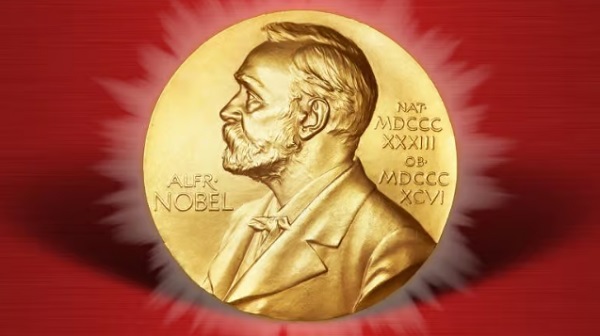
From the Brownstone Institute
By
Many news outlets reported the announcement of the Nobel Peace Prize on Friday by saying President Donald Trump had missed out (Washington Post, Yahoo, Hindustan Times, Huffington Post), not won (USA Today), fallen short (AP News), lost (Time), etc. There is even a meme doing the rounds about ‘Trump Wine.’ ‘Made from sour grapes,’ the label explains, ‘This is a full bodied and bitter vintage guaranteed to leave a nasty taste in your mouth for years.’

For the record, the prize was awarded to María Corina Machado for her courageous and sustained opposition to Venezuela’s ruling regime. Trump called to congratulate her. Given his own attacks on the Venezuelan president, his anger will be partly mollified, and he could even back her with practical support. He nonetheless attacked the prize committee, and the White House assailed it for putting politics before peace.
He could be in serious contention next year. If his Gaza peace plan is implemented and holds until next October, he should get it. That he is unlikely to do so is more a reflection on the award and less on Trump.
So He Won the Nobel Peace Prize. Meh!
Alfred Nobel’s will stipulates the prize should be awarded to the person who has contributed the most to promote ‘fraternity between nations…abolition or reduction of standing armies and…holding and promotion of peace congresses.’ Over the decades, this has expanded progressively to embrace human rights, political dissent, environmentalism, race, gender, and other social justice causes.
On these grounds, I would have thought the Covid resistance should have been a winner. The emphasis has shifted from outcomes and actual work to advocacy. In honouring President Barack Obama in 2009, the Nobel committee embarrassed itself, patronised him, and demeaned the prize. His biggest accomplishment was the choice of his predecessor as president: the prize was a one-finger send-off to President George W. Bush.
There have been other strange laureates, including those prone to wage war (Henry Kissinger, 1973), tainted through association with terrorism (Yasser Arafat, 1994), and contributions to fields beyond peace, such as planting millions of trees. Some laureates were subsequently discovered to have embellished their record, and others proved to be flawed champions of human rights who had won them the treasured accolade.
Conversely, Mahatma Gandhi did not get the prize, not for his contributions to the theory and practice of non-violence, nor for his role in toppling the British Raj as the curtain raiser to worldwide decolonisation. The sad reality is how little practical difference the prize has made to the causes it espoused. They bring baubles and honour to the laureates, but the prize has lost much of its lustre as far as results go.
Trump Was Not a Serious Contender
The nomination processes start in September and nominations close on 31 January. The five-member Norwegian Nobel committee scrutinises the list of candidates and whittles it down between February and October. The prize is announced on or close to 10 October, the date Alfred Nobel died, and the award ceremony is held in Oslo in early December.
The calendar rules out a newly elected president in his first year, with the risible exception of Obama. The period under review was 2024. Trump’s claims to have ended seven wars and boasts of ‘nobody’s ever done that’ are not taken seriously beyond the narrow circle of fervent devotees, sycophantic courtiers, and supplicant foreign leaders eager to ingratiate themselves with over-the-top flattery.
Trump Could Be in Serious Contention Next Year
Trump’s 20-point Gaza peace plan falls into three conceptual-cum-chronological parts: today, tomorrow, and the day after. At the time of writing, in a hinge moment in the two-year war, Israel has implemented a ceasefire in Gaza, Hamas has agreed to release Israeli hostages on 13-14 October, and Israel will release around 2,000 Palestinian prisoners (today’s agenda). So why are the ‘Ceasefire Now!’ mobs not out on the streets celebrating joyously instead of looking morose and discombobulated? Perhaps they’ve been robbed of the meaning of life?
The second part (tomorrow) requires Hamas demilitarisation, surrender, amnesty, no role in Gaza’s future governance, resumption of aid deliveries, Israeli military pullbacks, a temporary international stabilisation force, and a technocratic transitional administration. The third part, the agenda for the day after, calls for the deradicalisation of Gaza, its reconstruction and development, an international Peace Board to oversee implementation of the plan, governance reforms of the Palestinian Authority, and, over the horizon, Palestinian statehood.
There are too many potential pitfalls to rest easy on the prospects for success. Will Hamas commit military and political suicide? How can the call for democracy in Gaza and the West Bank be reconciled with Hamas as the most popular group among Palestinians? Can Israel’s fractious governing coalition survive?
Both Hamas and Israel have a long record of agreeing to demands under pressure but sabotaging their implementation at points of vulnerability. The broad Arab support could weaken as difficulties arise. The presence of the internationally toxic Tony Blair on the Peace Board could derail the project. Hamas has reportedly called on all factions to reject Blair’s involvement. Hamas official Basem Naim, while thanking Trump for his positive role in the peace deal, explained that ‘Palestinians, Arabs and Muslims and maybe a lot [of] people around the world still remember his [Blair’s] role in causing the killing of thousands or millions of innocent civilians in Afghanistan and Iraq.’
It would be a stupendous achievement for all the complicated moving parts to come together in stable equilibrium. What cannot and should not be denied is the breathtaking diplomatic coup already achieved. Only Trump could have pulled this off.
The very traits that are so offputting in one context helped him to get here: narcissism; bullying and impatience; bull in a china shop style of diplomacy; indifference to what others think; dislike of wars and love of real estate development; bottomless faith in his own vision, negotiating skills, and ability to read others; personal relationships with key players in the region; and credibility as both the ultimate guarantor of Israel’s security and preparedness to use force if obstructed. Israelis trust him; Hamas and Iran fear him.
The combined Israeli-US attacks to degrade Iran’s nuclear capability underlined the credibility of threats of force against recalcitrant opponents. Unilateral Israeli strikes on Hamas leaders in Qatar highlighted to uninvolved Arabs the very real dangers of continued escalation amidst the grim Israeli determination to rid themselves of Hamas once and for all.
Trump Is Likely to Be Overlooked
Russia has sometimes been the object of the Nobel Peace Prize. The mischievous President Vladimir Putin has suggested Trump may be too good for the prize. Trump’s disdain for and hostility to international institutions and assaults on the pillars of the liberal international order would have rubbed Norwegians, among the world’s strongest supporters of rules-based international governance, net zero, and foreign aid, the wrong way.
Brash and public lobbying for the prize, like calling the Norwegian prime minister, is counterproductive. The committee is fiercely independent. Nominees are advised against making the nomination public, let alone orchestrating an advocacy campaign. Yet, one laureate is believed to have mobilised his entire government for quiet lobbying behind the scenes, and another to have bad-mouthed a leading rival to friendly journalists.
Most crucially, given that Scandinavian character traits tip towards the opposite end of the scale, it’s hard to see the committee overlooking Trump’s loud flaws, vanity, braggadocio, and lack of grace and humility. Trump supporters discount his character traits and take his policies and results seriously. Haters cannot get over the flaws to seriously evaluate policies and outcomes. No prizes for guessing which group the Nobel committee is likely to belong to. As is currently fashionable to say when cancelling someone, Trump’s values do not align with those of the committee and the ideals of the prize.
-

 Business2 days ago
Business2 days agoCanada heading into economic turbulence: The USMCA is finished and Canadian elbows may have started the real fight
-
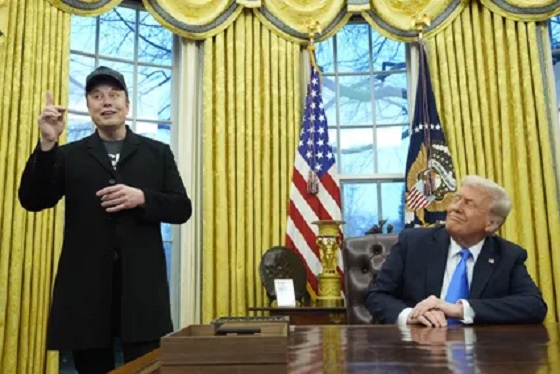
 Internet2 days ago
Internet2 days agoMusk launches Grokipedia to break Wikipedia’s information monopoly
-

 Business2 days ago
Business2 days agoBill Gates walks away from the climate cult
-

 National1 day ago
National1 day agoCanadian MPs order ethics investigation into Mark Carney’s corporate interests
-

 National1 day ago
National1 day agoCanada’s NDP is now calling women ‘non-males’
-

 Business1 day ago
Business1 day agoFord’s Liquor War Trades Economic Freedom For Political Theatre
-
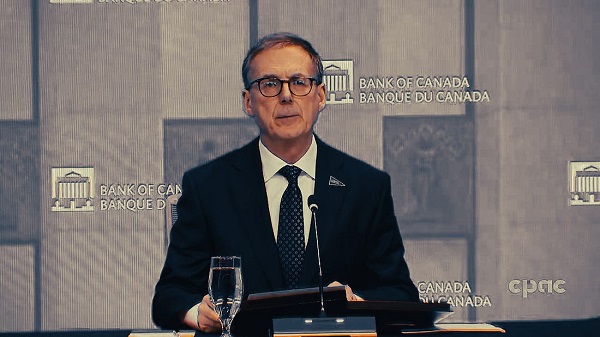
 Banks1 day ago
Banks1 day agoBank of Canada Cuts Rates to 2.25%, Warns of Structural Economic Damage
-
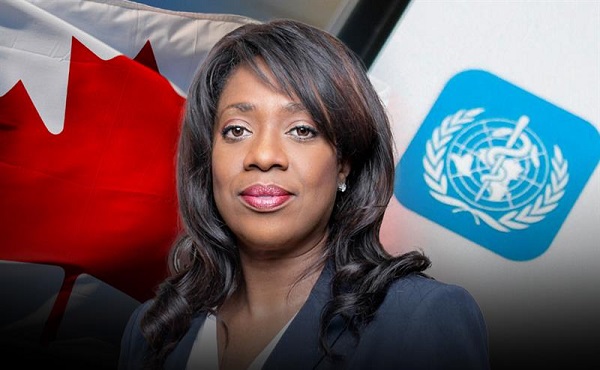
 Health1 day ago
Health1 day agoLeslyn Lewis urges Canadians to fight WHO pandemic treaty before it’s legally binding











